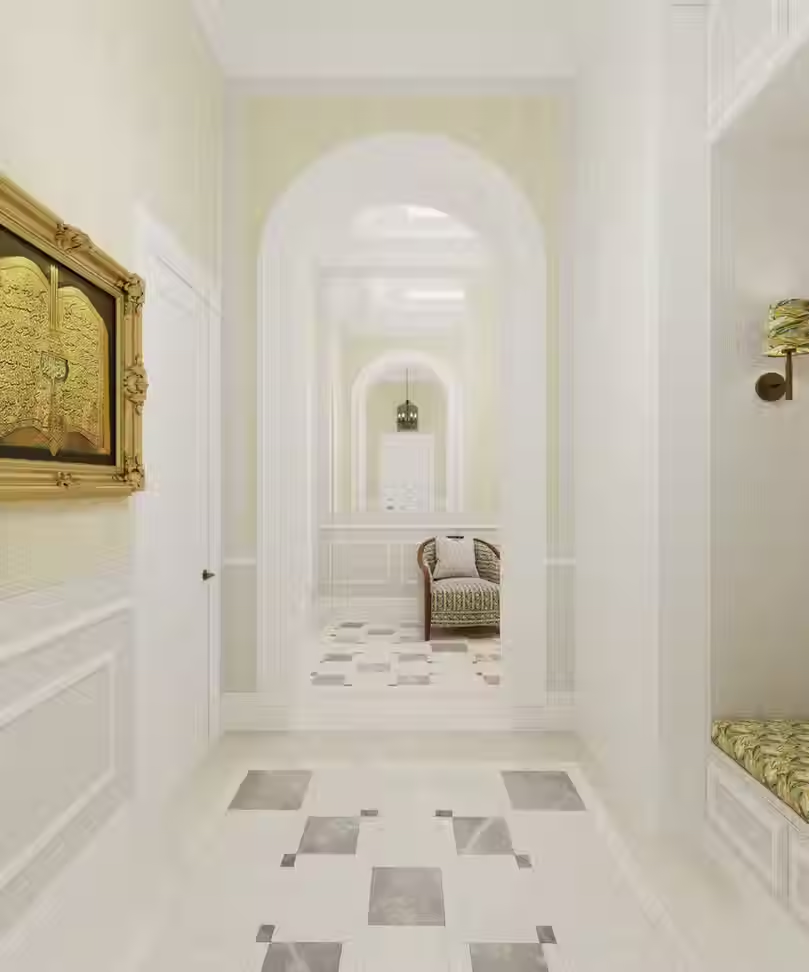Design Definition: Neoclassical Design
- Jennifer Copley
- Mar 24
- 2 min read
Updated: Mar 25
Our Design Definition series demystifies design concepts and delves into current trends, bringing you interior inspiration and simple design advice.
This week's design definition: neoclassical design.
In this post, we break down an aesthetic that blends history with modernity – neoclassical design - and provide some easy tips and tricks for implementing the style in your home.
What is Neoclassicism?
Neoclassicism is an 18th-century Western cultural and artistic movement inspired by classical antiquity. Emerging as a reaction to the elaborate and ornate Rococo style, the movement focused on Greco-Roman influences, emphasising simplicity, symmetry and grandeur.
Why do we care about neoclassical design? Well, although certain current political leaders seem to be talking about it… our reason to care is that there is a lot of overlap between neo-classical architecture and the Georgian or Victorian buildings in which we live and work. Indeed, neoclassical design, proportions and details are key inspirations to the historic architecture of London, from the Palladian inspired Georgian mansions, to the egg-and-dart Victorian Covings.
The opposite of overcomplicated, overly decorative design, neoclassicism focuses on elegance and simplicity. A modernised version of this aesthetic is a popular one - it’s also a great way to balance historical references with contemporary design elements, often considered timeless and luxurious.
Here’s how…
Colour
Embrace a muted colour palette as a canvas for refined decorative elements. Accent with pastels, subtle jewel tones or metallics. We love white, cream and beige with rich blue or green details.
Symmetry
Order and proportion reflect the classical ideals of balance and beauty. As such harmonious and symmetrical layouts are key to a neoclassical design scheme. Organise rooms around a central axis, with matching furniture and decor on either side to maintain visual equilibrium. Celebrate and highlight symmetrical layouts with mirrors, to amplify volume.
Architectural Features
Highlight architectural features and Greek and Roman influences, such as high ceilings, arches, columns, natural stone and marble. Box trim and cornice add subtle decorative detail. Vertical and horizontal lines emphasise volume and create a sense of grandeur.
Finishes
Neoclassical spaces often showcase luxurious yet understated materials. Marble, wood, and gilded accents are great choices to create luxury. Consider incorporating subtle decorative details that reference antiquity such as geometric, floral or meandering patterns.
Bespoke Elements

Bespoke details and ornamental elements in the form of wallpaper, soft furnishings, and hardware can be used to infuse a space with a sumptuous neoclassical feel.
When choosing furniture look for clean lines, geometric shapes, and subtle ornamentation. Chairs and sofas often have straight, fluted legs reminiscent of classical columns. We love mahogany, walnut, and ebony, with upholstery in fine fabrics like silk, velvet, and damask. Elegant statement chandeliers provide the perfect classical centrepiece.
Use furniture and decorative elements delicately to create refinement and luxury.
Enlist the Experts
Neoclassical design emphasises restraint, balance, and moderation. It can be tricky to perfect, so consider bringing in the experts to guide you. When done well, neoclassical design offers the perfect balance of history, elegance, and modernity. Whether you want to transform an entire home or add subtle classical touches, get in touch. OVS can help you to create this enduring and timeless style – the perfect foundation for sophisticated living spaces.













Comments